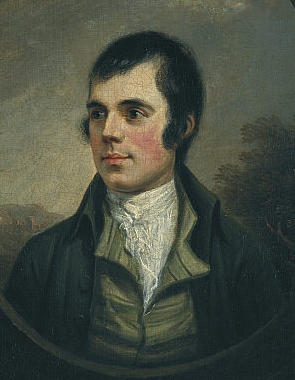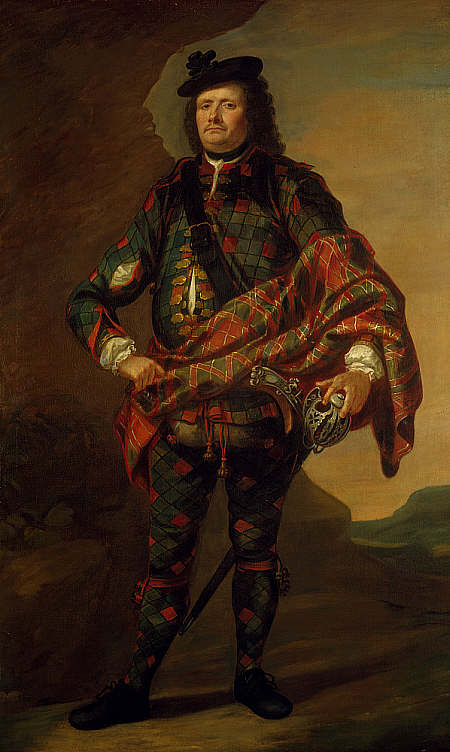 The Scottish poet Robert Burns (1759 – 1796) gave us a word that rhymes with purple. Sadly, children’s picture book writers probably can’t use it in their rhyming books about colors, because the word “curple” means “butt.” Here’s the stanza Burns wrote in a letter to a fellow poet (which I found in Molly Oldfield’s book, The Secret Museum*):
The Scottish poet Robert Burns (1759 – 1796) gave us a word that rhymes with purple. Sadly, children’s picture book writers probably can’t use it in their rhyming books about colors, because the word “curple” means “butt.” Here’s the stanza Burns wrote in a letter to a fellow poet (which I found in Molly Oldfield’s book, The Secret Museum*):
I’d be mair vauntie o’ my hap,
Douce hingin’ owre my curple
Than ony ermine ever lap,
Or proud imperial purple.
Loosely translated, Burns is saying he’d rather drape his butt in Scottish plaids than wear fancy ermine or royal purple robes.*
Poor Robert was never allowed to wear a kilt, because of the Jacobite uprisings (1688 – 1746). A Jacobite was a supporter of the exiled Roman Catholic Stuart king, James II and his heirs. It’s a little complicated, but in a nutshell, James II was deprived of his throne in 1688 and fled to France. After a series of uprisings, his son, Charles Stuart (known as “Bonnie Prince Charlie”) invaded England in 1745, trying to restore the Stuarts to the throne. Many Scots joined his cause, but his army was beaten by the English Hanoverians (the royal family in power). After the Jacobite rebellions were quashed, many Scots were executed for their support of Charles, and their lands were taken away. And Scotsmen were forbidden to wear kilts or play bagpipes.**
The painting below is dated 1720, showing the man so proudly wearing his tartans and plaids. This was painted long before the no-plaid edict was issued, and anyway, he was a supporter of the Hanoverian king George I who quashed the Jacobite rebels, so I guess he was allowed to wear what he felt like. Awesome outfit, isn’t it?